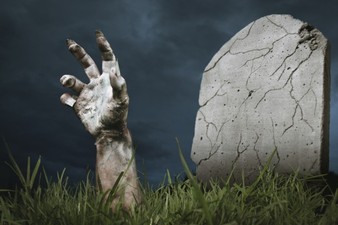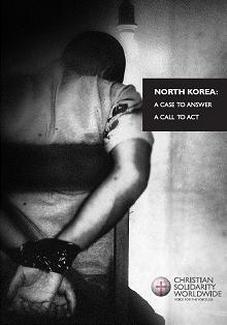 Statement does not speak for itself but a dying declaration without the maker of the statement may be admitted as admissible by court pursuant to Section 32(a) Evidence Act 1950. The rule of oral evidence is that it shall not be hearsay. However, the identification of what amounts to hearsay evidence is difficult. Cross in his book (Cross of Evidence, 6th edn, Butterworths) defines a hearsay statement as ‘a statement other than one made by a person while giving oral evidence in the proceeding…’, which is too broad a definition. In defining hearsay, it is necessary to emphasize that if an out-of-court assertion is adduced to prove the truth of the matter therein then it is hearsay, but if it is adduced merely to show the state of mind of the maker of the statement then it is not hearsay and therefore admissible.
In Malaysia, hearsay is admissible not based on exception but on inclusionary rule, which it is included in the Section 32(a) as relevant and admissible. The difference between hearsay rules in common law and Section 32(a) is, in particular, the absence under the section of the common law requirement that the maker must be under a ‘hopeless expectation of death’ at the time the statement is made. (See R V Perry [1909] 2 KB 697) Furthermore, the admissibility of such evidence under the common law is limited to homicide cases only. While, Section 32(a) does not expect the maker to be under a hopeless expectation of death and it applies to criminal as well as civil cases. By its wording, it refers to a statement made by a person as to ‘the cause of his death, or as to any circumstances of the transaction which resulted in his death…’. This wording is far-reaching in its effect: the evidence is admissible not merely to show the cause of death as in the common law, but also to show the circumstances which led to the death. However, the must be a proximate link between the out-of-court statement and the cause of death. If such a statement is too remote from the cause of death then it will be inadmissible. (See Livera v Abeywickreme (1923) 25 NLR 1 ; Pakala Narayana Swami v R [1939] MLJ 48)
Under the wide provision of Section 32(a), there are certain requirements that have to be establish before such statement can be accept as relevant and admissible by the court.
(a) An out-of-court is hearsay and inadmissible when the object of adducing the evidence is to establish the truth of the contents of the statement
Subramaniam v PP [1956] MLJ 220
In ruling out peremptorily the evidence of conversation between the terrorists and the appellant the trial judge was in error. Evidence of a statement made to a witness by a person who is not himself called as a witness may or may not be hearsay. It is hearsay and inadmissible when the object of the evidence is to establish the truth of what is contained in the statement. It is not hearsay and is admissible when it is proposed t establish by the evidence, not the truth of the statement, but the fact it was made. The fact that the statement was made, quite apart from its truth, is frequently relevant in considering the mental state and conduct thereafter of the witness or of some other person in whose presence the statement was made.
See also Re Soo Leot [1956] MLJ 54 ; Tan Gong Wai & Leong Hong Khie v PP [1986] 2 MLJ 206
(b) Cause of death
Boota Singh v PP [1933] MLJ 195 - An out-of-court assertion must have a proximity to the cause of the maker’s death, or to any of the circumstances which resulted in his death.
In this case a report made by the deceased against the prisoner nine months before the murder was admitted in evidence by the trial judge, as showing a motive for the crime. However, the trial judge agreed with the appellant’s counsel that the report was not admissible under s32(i), which is limited to statements by a person as to the cause of his death or as to any of the circumstances of the transaction which resulted in his death. The report made nine months previously cannot strictly be regarded as a report about any circumstances which resulted in the murder.
Ong Her Hock v PP [1987] 2 MLJ 45 – The recollection of the last words of a dying man by a witness who heard the actual words at the scene may properly be received in the evidence.
Mohamed bin Allapitchay & Ors v R [1958] MLJ 197 – in admitting under Section 32, the jury must be warned if the evidence is not given on oath and is not submitted to cross-examination.
In this case, Rahim’s statement of he had been woken up by four Indians, whom he named as Mohamed, Hassan, Haja Mohideen and Kakak, and that Mohamed had stabbed in the stomach with a knife, had been admitted without any question being raised by either side and it is only now on appeal that this court is asked to rule that is was inadmissible and that the verdict of the jury should be set aside. Lord Normand pointed out in Teper v The Queen [1952] AC 480, failure to take objection to the admissibility of evidence at the trial does not necessarily preclude objection being taken on appeal, and in all circumstances of this case, the court is of the opinion that the appellants should be allowed to take objection in this court.
(c) For a statement to be admissible under Section 32, the make, if alive, should be a credible witness
Chan Phuat Khoon v PP [1962] MLJ 127 – statement by the deceased, Pang Ngee Moi to her husband and to the doctor at the hospital prior to her death were admitted in evidence by reason of the provision of s 32 of the Evidence Ordinance 1950 and once they were admitted they became evidence of the facts contained in them. They were the voice of the woman speaking from beyond the grave. They were substitute for the oral evidence which she could have given had she been alive.
(d) If a dying declaration is reduced to writing, then the actual words of the deceased must be recorded.
R v Mitchell [1892] 17 Cox CC 503 – Cave J explained that the reason for the rule is clear, namely, that if the deceased’s statement is taken down in narrative form that amounts in effect to the witness himself drawing inferences and, perhaps, filling gaps in the deceased’s statement, which are properly matters within the province of the judge and jury. It is for them to draw any necessary inferences from the actual words of the deceased and not for the witness who heard the words spoken.
Toh Lai Heng v R [1961] MLJ 53 – the omission to record the actual words of the deceased is a fatal defect.
-PETEI KANAI A127897
 Prima facie is a Latin expression meaning on its first encounter, first blush, or at first sight. The literal translation would be "at first face" or "at first appearance", from the feminine form of primus ("first") and facies ("face"). Osborne’s Concise Law Dictionary defines prima facie case as follows:
“ A case in which there is some evidence in support of the charge or allegation made in it, and which will stand unless it is displaced. In a case which is being heard in court, the party starting, that it upon whom the burden of proof rests, must make out a prima facie case, or else the other party will be able to submit that there is no case to answer, and the case will have to be dismissed.”
Based on the definition, prosecution (represent the state) holds the legal burden of proving the facts in issue beyond reasonable doubt as opposed to the accused to raise the doubt. In order to prove the requisite burden of proof in a case, a prosecutor will seek out prima facie evidence that supports conviction and upholds that each required element of a crime did occur. The elements requiring prima facie evidence to support a given criminal case will widely vary based on the nature and type of criminal charge.
Privy Council in Haw Tua Tau (1981) 2 MLJ 49 set out the criteria which need to be satisfied for the finding of a ‘prima facie case’, as observed by Lord Diplock:
“…The prosecution makes out case against the accused by adducing evidence of primary facts. It is to such evidence that the word ‘if unrebutted’ refer. What they mean is that for the purpose of reaching the decision called for by section 188(1) the court must act on the presumptions (a) that all such evidence of primary fact is true, unless it is inherently incredible that no reasonable person would accept it as being true; and (b) that there will be nothing to displace those inferences as to further facts or to the state mind of the accused which would be reasonably be drawn from the primary facts in the absence of any further explanation… At the conclusion of the prosecution’s case what had to be decided remains a question of law only. As decider of law, the judge must consider whether there is some evidence (not inherently incredible) which, if he were to accept it as accurate, would establish each essential element in the alleged offence. If such evidence as respects any of those essential element lacking, then, and then only, is he justified in finding ‘that no case against the accused had been made out which if unrebutted would warrant his conviction’, within the meaning of section 188(1)…”
In Malaysia, the relevant statutory provision which sets out in what circumstances defence is to be called after the close of prosecution case, as follows:
i. Evidence Act 1950, Chapter VII sets out the rule in respect of Burden of Proof. Section 103
particularly states;
“ The burden of proof lies on that person who wishes the court to believe in its existence, unless
it is provided by any law that the proof of the fact shall lie on any particular person.”
ii. For Summary Trial before Magistrate, section 173 (f) (h) and (j) of Criminal Procedure Code (CPC);
and
iii. For Trial before a Judge, section 180 CPC.
In practice, any criminal proceeding against a defendant will require sufficient proof to proceed any further past the original arrest on grounds of probable cause. Without sufficient evidence, the prosecutor cannot bring any viable charges against a defendant. Typically, with this information in mind, the courts will dismiss any charges sought by prosecutors without sufficient prima facie evidence. This is under the assumption that without any prima facie evidence to support a case now, the prosecution will not be able to do so during a later trial. Therefore, holding a defendant would also be illegal.
- PETEI ANAK KANAI A127897
|